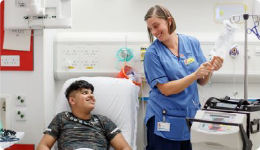Feelings:
- On edge
- Nervous
- Worried
- Irritable/low patience
Physical Symptoms:
- Racing heart
- Breathlessness
- Dizziness
- Muscular tension
- Feeling hot, sweaty and shaky
- Butterflies in the stomach
- Feeling nauseous
- Needing the toilet
- Hard to concentrate
Thinking styles:
- 'What if' thoughts about something bad happening
- The mind jumps from worry to worry
- Thoughts which imagine the worst case scenarios
- Being on the look out for danger
- The mind goes blank or ‘shuts down’.
Behaviour Patterns:
- Avoidance
- Find it hard to relax
- Snap or argue with people
- Get easily flustered
- Talk very quickly
Although short experiences of anxiety are normal and happen to everyone, anxiety becomes challenging when it starts to get in the way of doing things you want and need to do in your life.














